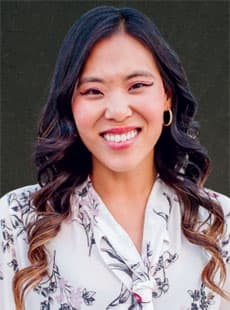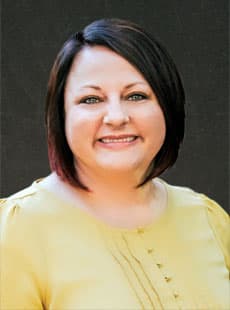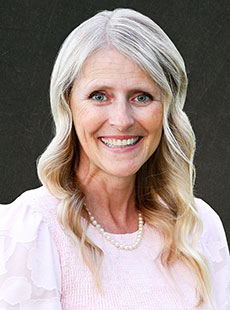 Course Introduction
Course Introduction
Core Standards of the Course
Strand 1
Students will analyze careers and explore the design industry.
Standard 1
Research employment/ entrepreneurial opportunities and preparation for interior design careers.
Standard 2
Interior Design Careers: Interior Designer/Entrepreneur, Lighting Designer, Kitchen and Bath Designer, Hospitality Designer, Healthcare Designer, Aging-in-Place Specialist, Staging Designer, Retail Designer, Institutional Designer, Set and Stage Designer, Retail Sales/ Purchasing Agent.
-
Identify the difference between an Interior Designer and an Interior Decorator.
- Interior design is the art and science of understanding people's behavior in order to create functional spaces within the structures that architects design.
- Decoration is the furnishing or adorning of a space with fashionable or beautiful things.
- http://www.plinthandchintz.com/reality/design-versus-decoration/
Standard 3
Identify educational requirements, knowledge, and skills for selected careers in the interior design industry.
-
Identify professional organizations and why it's important to be part of them.
- NCIDQ (National Council for Interior Design Qualifications). Offers exam required to be a certified interior designer. It requires 6 years of combined college-level interior design education and work experience in the field to qualify for the exam.
- ASID (American Society of Interior Designers). ASID advances the profession, and communicates the impact of interior design to enhance the human experience.
- NKBA (National Kitchen and Bath Association). The mission of NKBA is the enhance member success and excellence, promote professionalism and ethical business practices, and provide leadership and direction for the kitchen and bath industry worldwide.
- AAHID (American Academy of Healthcare Interior Designers). An enhanced qualification specific to healthcare designers which requires a minimum of five years' experience in healthcare design and NCIDQ certification.
Strand 2
Students will apply the concepts of the programming and design development phases through successful application of a client profile.
Standard 1
Review the meaning of "form follows function"- the form should reflect its intended use and fulfill its intended purpose. The first priority in a design is its function, which dictates the shape or form of a design. Example: a chair will be stripped of embellishment or decorative design and will fulfill only the needs of its function.
Standard 2
Students will identify the programming phase (research and decision making process that identifies the scope of the work to be designed) of the design process. "Programming is problem seeking, design is problem solving."-William Peņa
-
Assess client's needs through client interview/questionnaire and the creation of an Interior Design Client Profile.
-
Research and identify the design constraints (budget, site and/or space constraints).
Standard 3
Students will identify the design development phase (brainstorming, identifying and researching possible solutions, color concepts, and space planning) of the design process.
-
Design and develop possible solutions (appropriate material and textile selection, style and finish selections, color selection and space plan)
- Textile selection: appearance and tactile quality (touch or hand-the feel), performance, or functional properties, that affect wear-life and durability, safety factors such as flammability, installation and maintenance, quality, cost-initial and lifecycle, client budget
- Color Selection Factors: Light, Client preference, Space, Trends & Style, Location in the World/Cultural associations
- Style and Finish Selection: Finishes include: Walls, ceilings, and floors. Factors in selecting finish selections include visual characteristics, performance characteristics, maintenance, life-cycle evaluation, durability, sustainability, and acoustical properties.
-
Present Concept (presentation board, digital presentation, color board, floor plan)
Performance Objective #1
Complete an Interior Design Client Profile.
Strand 3
Students will apply the design and function of interior space through the use of space planning while utilizing the elements and principles of design.
Standard 1
Implement design ideation (the creative process of generating, developing, and communicating new ideas) for space planning using, adjacency matrices, bubble diagrams and block diagrams.
*See Advanced Interior Design (pdf) for illustration
Standard 2
Use block diagrams to demonstrate interior zones and correct circulation patterns.
Standard 3
Use proxemics (the amount of space that people feel comfortable between themselves and others) and anthropometrics (the scientific study of measurements and proportions of the human body) for proper furniture arrangement.
-
Identify the Four Zones of Interpersonal Space for use in furniture arrangement.
-
Identify standard clearances and furniture dimensions. Go to Furniture Arranging Guidelines by Diane Kinateder. Under Interior Design section for Conference Proceedings 2011 in FACS File Cabinet. http://www.uen.org/cte/facs_cabinet/facs_cabinet16d.shtml
-
Apply the elements and principles of design as guidelines to create optimal space planning.
Performance Objective #2
Create a space plan for client profile or FCCLA Interior Design STAR Event.
Strand 4
Students will identify technology and other industry skills used in interior design documentation and presentations.
Standard 1
Become acquainted with basic interior design software.
Standard 2
Explore and analyze a current design software App or program related to the interior design industry (Google SketchUp, Homestyler, Revit, Auto CAD 360, Moodboard, Measures, Home Design, and Olioboard).
- http://www.homestyler.com
- http://www.autodesk.com/education/free-software/revit
- http://www.gomoodboard.com
- Measures & Home design are apps that can be downloaded
Standard 3
Apply various types of presentation methods to convey design concepts (color board, oral presentation, and digital presentation).
Standard 4
Use one or more of the following visual presentation techniques: floor plan, furniture plan, rendering, elevation, drafting or sketching.
-
Floor Plan: A drawing, or plan that communicates wall locations, door and window locations, and spatial relationships in scale from a bird's-eye view. Most commonly drawn in 1/4" = 1' scale.
-
Furniture Plan: A plan that uses templates or furniture symbols to show the locations of furnishings and equipment once the spaces are identified in the building footprint and roughly draw in proportion to actual size.
-
Rendering: The process of adding color, values, textures, and patterns to a representative interior or exterior space using a variety of manual or digital tools.
-
Elevation: A sketch that shows the vertical representation of a wall or space; a two-dimensional scale drawing that shows a vertical slice through a plan that shows window placement, wall details, and architectural details.
-
Drafting: The development of technical drawings to systematically and visually communicate information about architectural structures, both interior and exterior.
-
Sketching: The use of fluid, loose lines to communicate an idea, concept, object or space. These quick drawings use approximate measurements to capture the main features of a space or interior.
Performance Objective #3
Using the client profile and space plan or FCCLA Interior Design STAR Event Scenario, demonstrate one or more of the following visual presentation techniques: floor plan, furniture plan, rendering, elevation, drafting or sketching.
Strand 5
Students will analyze the specification of surface treatments, including sustainability and appropriate selection for use in interior design.
Standard 1
Evaluate the appropriateness of materials and construction methods for various surface treatments of floors, walls, windows and millwork.
-
Environmental Concerns such as air quality and recycle/reuse
-
Floors: carpet, wood, tile, vinyl/linoleum, concrete
-
Walls: paint, wallpaper, fabric, wood, tile, brick, concrete, cork, mirror
-
Windows: wood, aluminum, vinyl
- Single- double- or triple-paned: air between panes provides insulation and can also be filled with argon gas for even better insulation
- Low-e (low-emissivity) glass in newer thermal windows have a clear coating that keeps heat inside or out depending on season and blocks out ultraviolet rays to reduce fading of interior materials
-
Millwork:
- Moldings: window and door casings, cornices, chair rails, baseboards, crown, coffered ceilings, medallions
- Doors:
- made of wood, metal, fiberglass, or combination of these materials
- flush, paneled, Dutch, louvered, pocket, bi-fold
- interior hollow core; exterior solid and/or insulated
- fire rated doors between living space and attached garage
Standard 2
Discuss the relevance of energy efficiency, sustainability and care when specifying products.
-
Energy Efficiency: the goal to reduce the amount of energy required to provide products and services.
- EPA (Environmental Protection Agency) Energy Star program awards companies who have minimized the amount of power or water savings in their dishwashers and refrigerators. All Energy Star appliances have internal water heaters that raise the water temperature within the appliance itself and keeping the home water heater at a lower temperature which will save energy.
-
Sustainability: A way of using resources that does not deplete them; involves a method or practice or way of using materials that has minimal long-term effect on the environment.
Standard 3
Identify how LEED (Leadership in Energy and Environmental Design) helps designers fulfill their role in protecting the health safety and welfare of the public.
Standard 4
Identify the commercial and residential textile standards (UFAC Upholstered Furniture Action Council, ACT Association for Contract Textiles). Include terminology: colorfastness to light, flammability, physical properties, wet and dry crocking and abrasion
-
Colorfastness: Having color that retains its original hue without fading or running
-
Flammability Resistance: The ability of a fabric or fiber to reduce fire spread or extinguish a fire.
-
Physical Properties: The ability of fabrics to retain their shape, flexibility, and original fiber characteristics is also important to durability.
-
Wet and Dry Crocking: Transfer of dye from the surface of a dyed or printed fabric onto another surface by rubbing.
-
Abrasion Resistance: This describes the ability of fabric or textile product to resist wear caused by people or objects rubbing against it.
Performance Objective #4
Prepare a materials board to support visual presentation for client profile or FCCLA Interior Design STAR Event.
Strand 6
Students will classify lighting types to meet various lighting functions and needs.
Standard 1
Identify and review lighting terminology (lumens, foot candle, kelvin, (CRI) color rendering index, luminaire, lamp, (LED) Light Emitting Diode, halogen, fluorescent, incandescent, (HID) High Intensity Discharge)
-
Lumens: The measurement of the flow of light produced by one lamp.
-
Foot Candle: The illumination at a one foot distance from the light of one candle falling onto a one foot square surface. The intensity of light is calculated in foot candles.
-
Kelvin Temperature: A measurement scale used to determine the warmth or coolness of a light source. The lower the Kelvin temperature, the warmer the light; the higher the Kelvin temperature, the cooler or bluer the light appears.
-
Color Rendering Index (CRI): The measurement of the quality of light color, the higher the number (0-100) the clearer the light. The closer a lamps color spectrum is to natural light the higher the quality of light it produces.
-
Luminaire: A lighting fixture
-
Lamp: The technical name for a lightbulb
-
Light Emitting Diode (LED): A semiconductor material imbedded in a plastic chip produces light when electrical current energizes the chip causing an interaction between the electrical field and phosphor inside the plastic capsule. LEDs are durable, strong, and long-lasting.
-
Halogen Lamp: A type of incandescent lamp that provides crisp, white light; comes in both line voltage and low voltage and has a longer life than traditional incandescent.
-
Fluorescent Lamp: An electric-discharge light that requires a ballast to start the lamp and control the electric current; electric current passes from one end of the lamp to the other through a cathode, but does not produce heat. The phosphorous coating inside the glass tube allows you to see light.
-
Incandescent Lamp: The oldest form of electrical light; provides a warm glow and flexibility of use; highly inefficient. Produces light by heating a filament inside a glass envelope to such a high temperature that it emits light.
-
High Intensity Discharge (HID): Constructed with an inner arc tube inside a large, pressurized glass envelop; light occurs when an electrical arc passes between the cathodes in the pressurized tube, causing the metallic additives to vaporize; longer lamp life, much illumination per watt of energy, and can operate in a variety of indoor and outdoor temperatures.
Standard 2
Determine the basic amount and location of light needed for various spaces based on aesthetics, economics, and safety.
-
Ambient Lighting: Provides an area with overall illumination. Also known as general lighting, it radiates a comfortable level of brightness without glare and allows you to see and walk about safely. In some spaces such as laundry rooms, the ambient lighting also serves as the primary source of task lighting. It can be accomplished with chandeliers, ceiling or wall-mounted fixtures, recessed or track lights and with lanterns mounted on the outside of the home. Having a central source of ambient light in all rooms is fundamental to a good lighting plan.
-
Task Lighting: Helps you perform specific tasks, such as reading, grooming, preparing and cooking food, doing homework, working on hobbies and playing games. It can be provided by recessed and track lighting, pendant lighting, and undercabinet lighting, as well as by portable floor and desk lamps. Task lighting should be free of distracting glare and shadows and should be bright enough to prevent eye strain.
-
Accent Lighting: Adds drama to a room by creating visual interest. As part of an interior design scheme, it is used to draw the eye to houseplants, paintings, sculptures and other prized possessions. It can also be used to highlight the texture of a brick or stone wall, window treatments or outdoor landscaping. To be effective, accent lighting requires at least three times as much light on the focal point as the general lighting surrounding it. Accent lighting is usually provided by recessed and track lighting or wall-mounted picture lights.
Standard 3
Analyze the context of different lighting applications in residential and commercial spaces.
-
Fluorescent lights are particularly efficient for commercial uses, especially in hospitals, schools, offices, stores, factories, and other large public spaces because they can create broader areas of light. Although fluorescent bulbs show off the natural colors of flowers and food, food safety and quality can suffer from the added heat and ultraviolet radiation. Full spectrum bulbs will therefore create equal but less damaging light in supermarkets. Lighting is also used to invite shoppers in to retail spaces by using brightly colored neon signs. Outdoor retail lighting creates a sense of security at night for shoppers.
-
LED lamps are used in residential spaces because they are available in many sizes and shapes and produce a good spotlight and can be used for general lighting. Lighting affects emotions, and if used successfully, it will provide a psychological sense of well-being by creating a sense of security, warmth, and comfort.
Standard 4
Identify lighting needs as people age (elderly needs: as vision diminishes they'll need a brighter light, reduced glare, and reduce dramatic changes of lighting from space to space).
Strand 7
Students will identify and explore the use of universal design in residential and/or commercial applications.
Standard 1
Define Universal Design (Developed by Ron Mace, "Design of products and environments to be usable by all people to the greatest extent possible without adaptation or specialized design".
Standard 2
Identify the Seven Principles of Universal Design: Equitable Use, Flexibility in Use, Simple and Intuitive, Perceptible Information, Tolerance for Error, Low Physical Effort, Size and Space for Approach and Use.
-
Principle 1 - Equitable Use: The design is useful and marketable to people with diverse abilities.
-
Principle 2 - Flexibility in Use: The design accommodates a wide range of individual preferences and abilities
-
Principle 3 - Simple and Intuitive Use: Use of the design is easy to understand, regardless of the user's experience, knowledge, language skills, or current concentration level.
-
Principle 4 - Perceptible Information: The design communicates necessary information effectively to the user, regardless of ambient conditions or the user's sensory abilities.
- Use different modes (pictorial, verbal, tactile) for redundant presentation of essential information.
- Provide adequate contrast between essential information and its surroundings.
- Maximize "legibility" of essential information
- Differentiate elements in ways that can be described (i.e., make it easy to give instruction or directions).
- Provide compatibility with a variety of techniques or devices used by people with sensory limitations.
-
Principle 5 - Tolerance for Error: The design minimizes hazards and the adverse consequences of accidental or unintended actions.
-
Principle 6 - Low Physical Effort: The design can be used efficiently and comfortable and with a minimum of fatigue.
-
Principle 7 - Size and Space for Approach and Use: Appropriate size and space is provided for approach, reach, manipulation, and use regardless of user's body size, posture, or mobility.
Standard 3
Apply Universal Design principles for transgenerational, aging in place, and (ADA) American Disabilities Act scenarios.
-
Transgenerational: The design of products, workplaces, health care institutions, and residences so as to allow people to use them functionally regardless of the physical or sensory restrictions that they may develop as they age. http://www.transgenerational.org/viewpoint/transgenerational.htm
-
Aging in Place: A term describing the goal of older adults choosing to live longer and independent in their homes rather than moving to retirement facilities; design of such facilities. (If an older adult chooses to remain living in a home of their choice as long as possible, an interior designer will work with them to help maintain or improve their quality of life by making home modifications. Modifications can include increased lighting, additional railings, and accessible switches, grab bars, non-skid flooring, walk-in bathtubs, and flexible shower heads.)
-
American Disabilities Act (ADA): The ADA ensures equality for people with disabilities and allows them the same access that others enjoy, including employment, building access, and communication options. (Bathroom fixtures conveniently and safely located with ample room for manipulating a wheelchair. Front loading dishwasher and washer/dryer, revolving shelves, hard/smooth and slip-resistant floor coverings, lever handles wheelchair ramps for easy access into buildings, braille on signs)


 UTAH EDUCATION NETWORK
UTAH EDUCATION NETWORK

 Justin
Justin Braxton
Braxton Dani
Dani Kayla
Kayla Katie
Katie Lora
Lora Rob
Rob Val
Val
